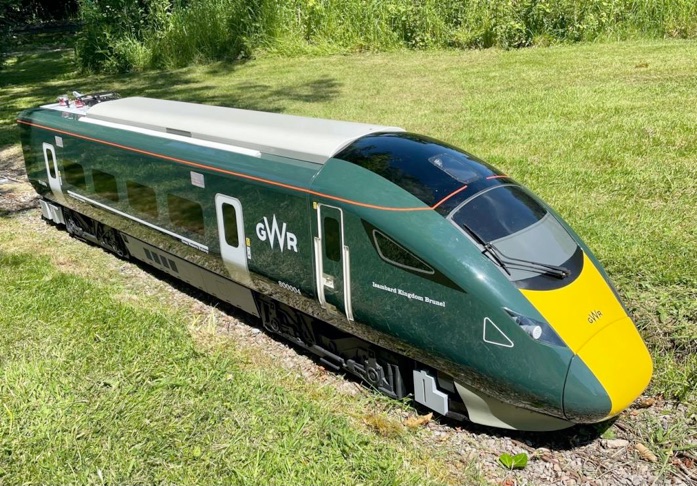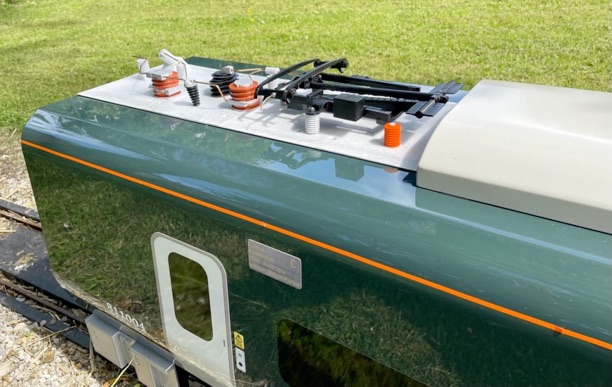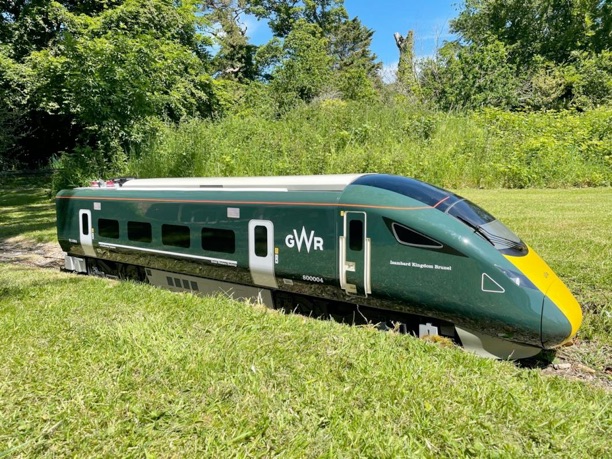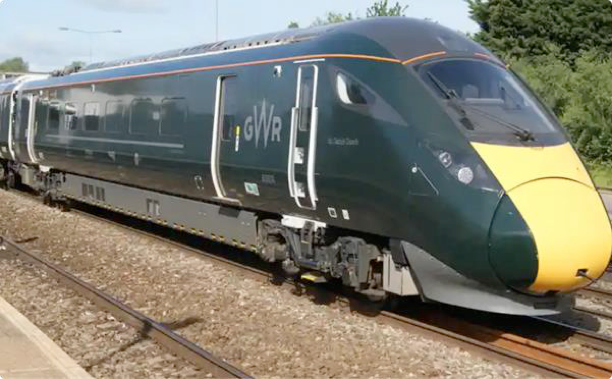GWR CLASS 800 LOCO
ISAMBARD KINGDOM BRUNEL
By Bob Lilley

GWR CLASS 800 LOCO
ISAMBARD KINGDOM BRUNEL
By Bob Lilley

In the Autumn of 2019, the Bristol SMEE committee asked that consideration be given to building an electric powered Class 800 type 7 locomotive for passenger hauling at Ashton Court. The number of available steam locomotives and drivers were decreasing and with Pegasus and Telford 20 and 10 years old respectively it was felt that a further reliable locomotive could be needed.
A proposal for a new locomotive was, therefore, put to the committee which approved the project and work was started with the aim for completion being summer 2020. However, with lockdown, this was delayed and ready for service in June 2021.
In order to maximize reliability, the design for the new model locomotive - Isambard Kingdom Brunel - has been kept as simple as possible with the main components being standard proprietary items from established suppliers.
The loco is battery powered using a standard 4QD Pro150 variable speed forward/reverse controller feeding two Parkside motorized bogies each equipped with 2 x 750 watt dc motors. Power is provided by four 12volt 100 Ah deep discharge batteries which are connected in series/parallel to give a 24volt 200Ah with onboard battery charger.
Space is available for a further pair of batteries if required and comprehensive voltage and energy monitoring is installed to allow checking of the battery state with normal output being restricted to half rated output to preserve battery life.
Vacuum braking for carriages and a handbrake are provided together with horns and headlights controlled from the hand controller. The layout design is such that all auxiliary equipment can be accessed by removing the air conditioning hatch with batteries and simple bogie removal possible by lifting off the main body.
Much of the build is down to Bristol SMEE members. With the simple well proven engineering approach the most difficult job has been the body. The main body is sheet steel professionally produced to the specified cross-section and mounted on a welded angle iron chassis. The dummy bogie fronts, cab and nose are 3D printed.
The first cab moulding and pantograph assembly were found to distort in the sweltering sunshine we had the previous year. A second cab has, therefore, been produced in a plastic capable of standing a higher temperature and the pantograph has been rebuilt with metal. The locomotive has been professionally painted and decals applied to represent, as far as possible, the original Isambard Kingdom Brunel GWR Locomotive. Ancillaries include the rear pantograph, a detailed windscreen wiper, engine covers and air conditioning fans on the roof. Much work has gone into reinforcing the front and rear section undersides to ensure that in case of derailment and subsequent re-railing undue force is not applied to printed items and all lifting should be done from the bottom of the structure.
As with the design, driving is very simple using the standard 4QD controller with a deadman’s handle. Drivers should aim for a smooth takeaway; braking, and monitor the voltage, with the locomotive being taken out of service if when stationary and the battery not supplying any load, the voltage falls to 24.4 volts. With normal loads the battery should be capable of 100 laps from full charge. On completion of service the battery charger should be plugged into a 240v supply and left connected until the locomotive is next used. The charger supply should be unplugged before switching on and energizing the locomotive.




First run with club members on board. Test data indicated that 100 laps should be easily achievable on a fully charged battery.


.
GWR Class 800 Locomotive

As part of the Great Western Main Line order was originally for Class 801s, all Great Western franchise units have the possibility to be converted to electric-only operation by removal of the diesel engines. The Class 800 trains came into service on the Great Western Main Line on 16 October 2017, under the brand name Intercity Express Train (IET). Teething problems surfaced on the inaugural service, with the train running late and an air conditioning unit discharging water into a carriage. Following further problems, the units were withdrawn from service for one day on 19 October, then re-entered service the next day. The Class are now used widely throughout the rail network and a recent withdrawal from service following discovery of cracks resulted in widespread disruption.


Modelengineeringwebsite.com
the only free and the only weekly magazine for model engineers.
Editor: David Carpenter